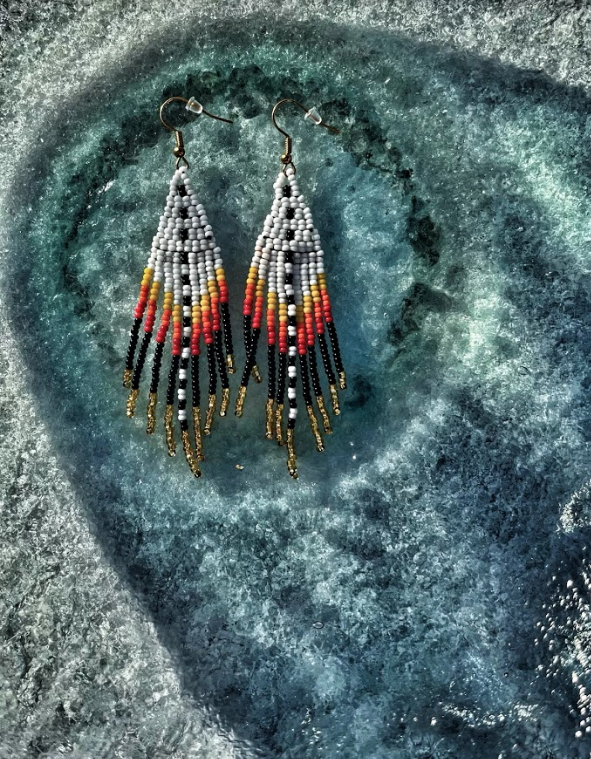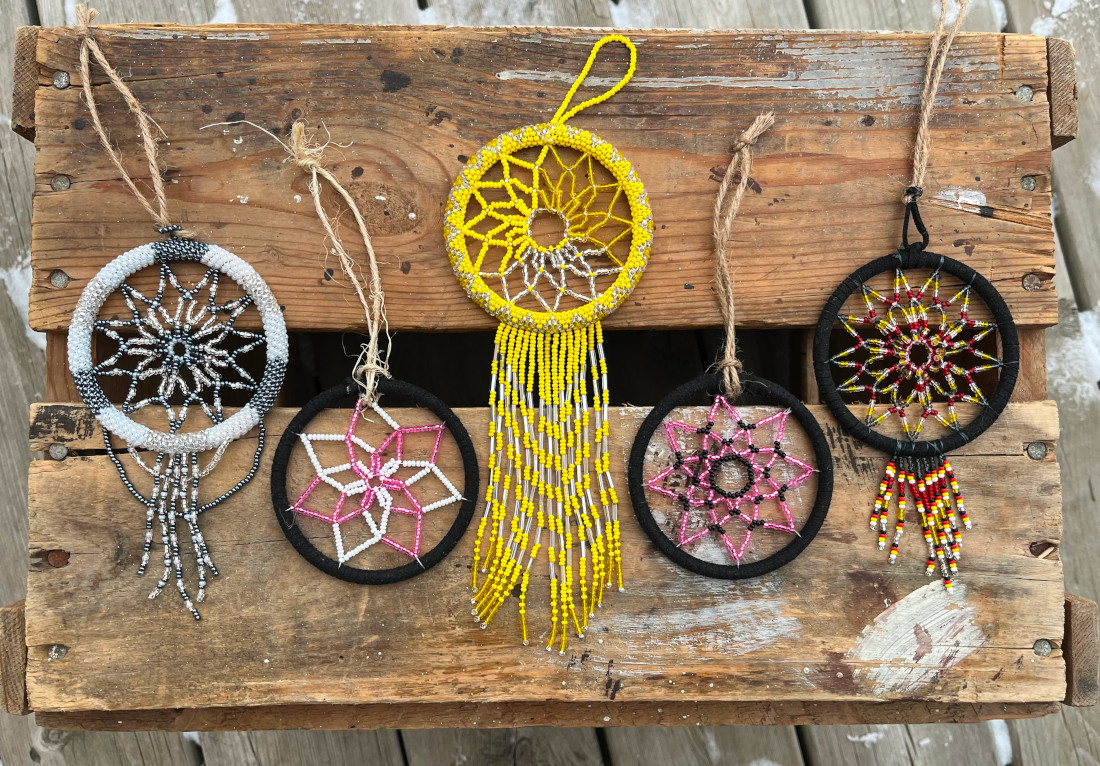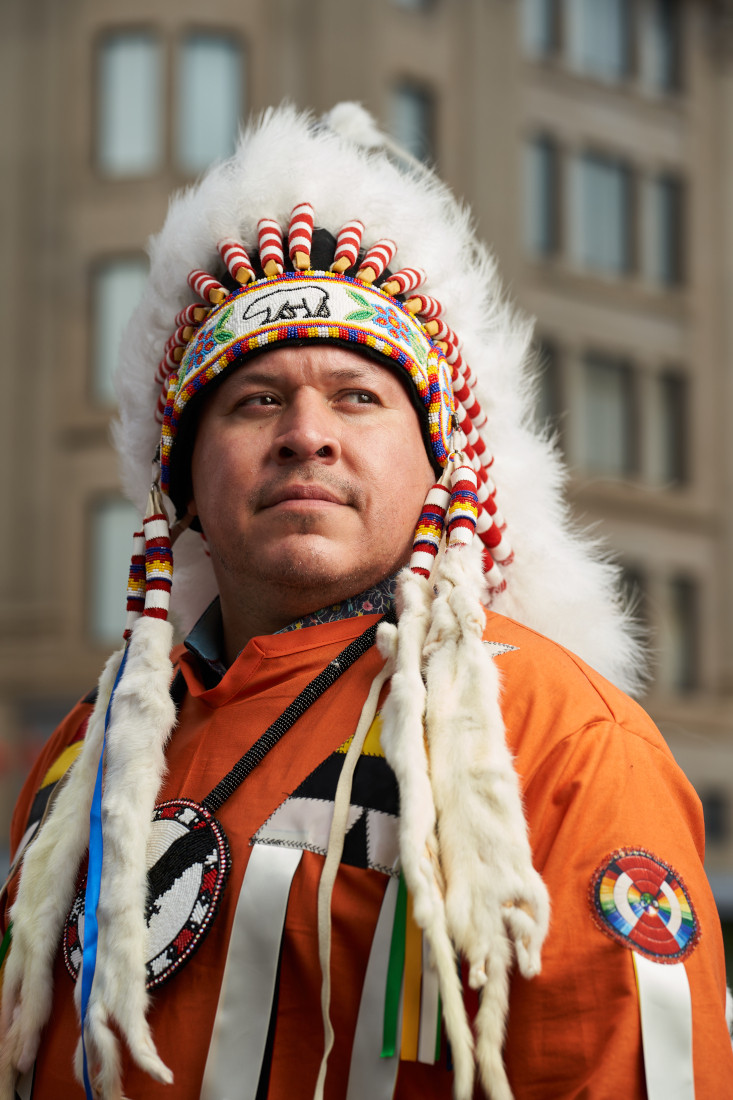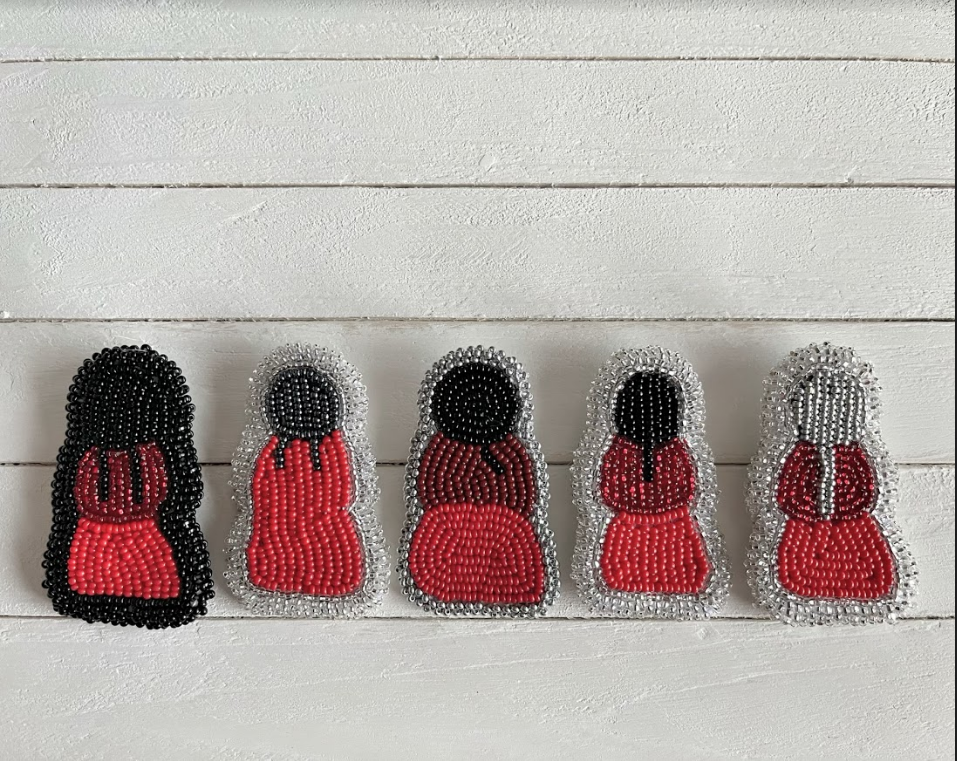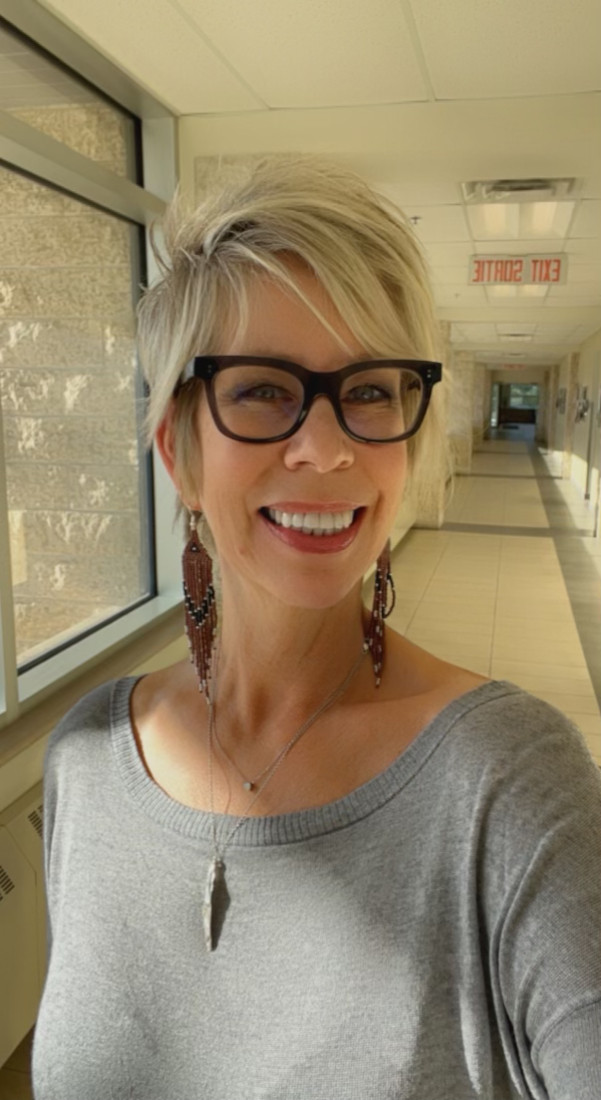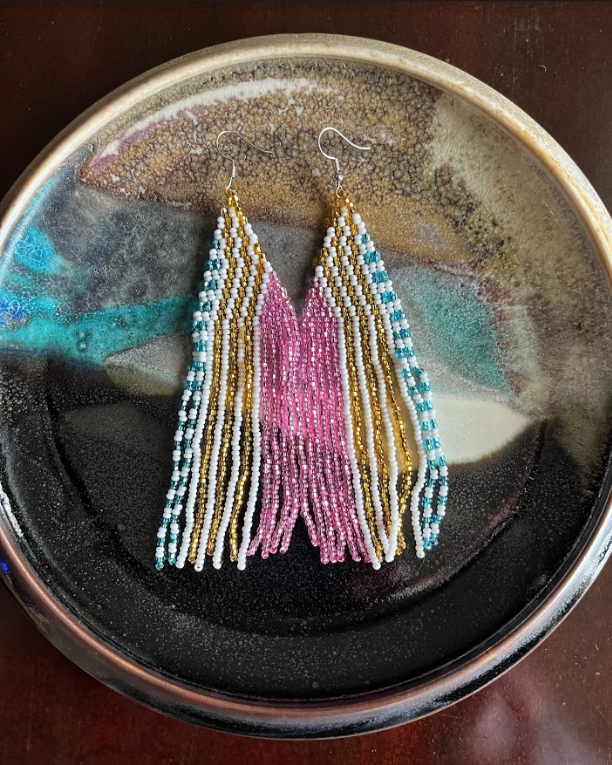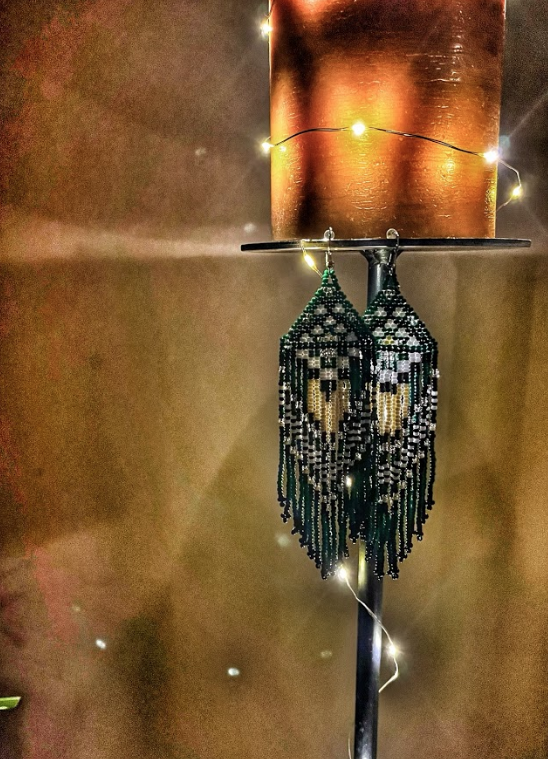Beading beyond bars
Beadwork initiative reveals greater truth about incarceration in Manitoba
A little over three years ago, Sandra Burling’s daughter started dating a man whose mother, Tryli Anderson, was incarcerated. When Anderson began sending beadwork as gifts, it sparked an idea that changed Anderson’s and Burling’s lives.
“I thought they were gorgeous, and I asked if she wanted to consider selling them,” Burling says. “That’s truly the foundation of how our project started.”
In February 2020, Burling connected with another woman who was participating in reintegration programming through the Elizabeth Fry Society of Manitoba along with Anderson.
“She just kept sharing what I was doing with her friends in jail so that they could have some support, too,” Burling says. “It was like the most unselfish thing she could do. She didn’t want to keep it to herself. She wanted to help her girlfriends.”
These connections formed the threads of Burling’s self-started, non-profit initiative: Women Helping Women Beadwork. Aside from additional shipping costs, every cent earned from beadwork sales goes into the beaders’ trust accounts to support them.
Today, Burling works as an intermediary by selling incarcerated women’s beadwork to local and international buyers. Each week, she opens her mailbox to packages sent from various women’s correctional institutions. Each envelope contains a colourful assortment of beadwork – be it a pair of flowery earrings, a custom lanyard or a handmade dreamcatcher.
She has no institutional affiliation. Instead, she views herself as a friend from the outside with compassion for those living life behind bars. When it comes down to it, Women Helping Women Beadwork is a labour of love between Burling and a growing community of incarcerated and newly-released beaders.
“The reason why it works for me is because I’m not working with the jail. I’m working with the women, so I don’t have to deal with the bureaucracy,” Burling says. “The ladies mail me their beadwork, and I have a relationship with them.”
‘They become forgotten women’
Since starting the project, Burling has witnessed the laundry list of challenges and barriers incarcerated women face both behind bars and after they’re released.
“Society doesn’t really look upon incarcerated people with open love,” Burling says. “They become forgotten women, except for their friends and maybe family members.”
In Canada, Indigenous women make up only five per cent of the total population but nearly half of the prison population at 48 per cent. In Manitoba, three-quarters of the federal prison population admitted in 2019 was Indigenous.
Grand Chief Jerry Daniels of the Southern Chiefs’ Organization (SCO) believes a number of factors contribute to disproportionately high incarceration rates among Indigenous women.
“Specifically to Indigenous women, in the last 10 years, there has been a 139 per cent increase in incarceration,” Daniels says. “A lot of it has to do with poverty. It has to do with historical trauma that has been passed down from generation to generation.
Kelly Gorkoff, an associate professor of criminal justice at the University of Winnipeg, says socioeconomic elements play a significant role, which are directly influenced by the persistent weight of colonialism.
“The legacy of colonization really impacts women differently than it impacts men,” Gorkoff says. “(They) certainly are much more likely to be victimized in terms of interpersonal violence. So, when some women fight back, they’ll be charged.”
Poverty rates among Indigenous peoples are also disproportionately higher. In 2020, 23.2 per cent of First Nations people, 10.5 per cent of Métis and 14.4 per cent of Inuit lived in poverty compared to the overall rate of 8.8 per cent.
Additionally, the overrepresentation of Indigenous children in the child-welfare system may also play a role in eventual incarceration. Today, 90 per cent of the 10,000 kids in care in Manitoba are Indigenous.
While neither the federal or provincial government collects data on the number of inmates who were previously involved in the child-welfare system, qualitative scholarship has drawn viable links.
In a narrative study published by Ka Ni Kanichihk in 2015, the authors found consistent crossover between early interactions with the criminal-justice system among Indigenous children in the child-welfare system.
As a bail worker for the Elizabeth Fry Society of Manitoba, Simran Badhan has seen this cycle perpetuate itself when the children of incarcerated women are placed under Child and Family Services.
“In certain cases, we have to apprehend the kid. I totally understand. But in some cases, like when people are out on bail, they can’t even see their kids because of their charges,” Badhan says. “The justice system doesn’t understand, or white settler society doesn’t understand that reunification will keep this person out and help them rehabilitate.”
When incarcerated women begin the reintegration process, they generally leave prison with few belongings and shaky socioeconomic supports. Oftentimes, they’re dropped off in Winnipeg with a bus ticket and few aftercare supports, Gorkoff says.
After connecting with dozens of incarcerated women, it’s a story Burling has heard from many.
“These ladies have nothing. They go in with nothing. They come out with nothing. They come out with a bag of clothes on their back. That’s it,” Burling says. “It’s terrible.”
While many imprisoned women have few personal belongings, they carry another form of baggage upon their release: a criminal record.
“Having a criminal record prevents or inhibits reintegration because there are many jobs that are unavailable,” Gorkoff says. “A lot of places where more marginalized women are typically employed, like daycare work or some service work, you can’t get a job if you have a criminal record.”
Depending on the nature of the crime, incarcerated women may have access to different supports. If they end up in a federal prison, they’re automatically enrolled in an aftercare program that facilitates a transition.
As for provincial institutions, Gorkoff says it’s more of a bargain. Still, she believes an entirely different issue remains.
“Reintegration means you were integrated to begin with,” Gorkoff says. “If you experience massive social, cultural and economic marginalization to begin with, you don’t want to be reintegrated into that.”
For incarcerated Indigenous women, reconnecting to culture can also be a form of healing. But, historically, cultural and spiritual programming has been excluded from the criminal-justice system.
Daniels says the SCO is changing that. Through the First Nations Justice Program, the SCO supports their members through restorative justice and land-based practices.
“Some of the things communities have been doing in the summer is medicine picking,” Daniels says. “We’ve got to continue to create that broader community network and support system.”
Burling sees Women Helping Women Beadwork as a small but effective way to help beaders behind bars get a financial head start on the reintegration process. It’s the type of community Gorkoff believes could facilitate successful reintegration.
“When young Indigenous women are connected to the community ... they’re much more likely to have healthy relationships with themselves, with the community and with other people,” she says. “It is really about developing a new sense of being, a new sense of purpose and healing from those antecedents of crime.”
A chain of selflessness
It’s been almost three years since Burling began collecting and selling beadwork from incarcerated women.
But in November 2022, she had what she calls a “full-circle successful moment.” One of her formerly incarcerated beaders, Lisa, recently started a similar initiative based in British Columbia.
Once an inmate at the Headingley Correctional Centre, Lisa, now released, sells inmates’ beadwork through her business, Inside Out Beadwork, or @insideoutbeadwork on Instagram. “She’s doing the exact same thing that I’m doing for her friends that she was incarcerated with,” Burling says. “She’s trying to start a business, so she’ll keep some of the profits to help the women out, but she’s trying to do the same thing.”
“To me, that’s like a full-circle successful moment for somebody to get out, have supports, stay in a treatment centre, (help) women, kind of sharing the love.”
While Women Helping Women Beadwork is the only initiative of its kind in Manitoba, other organizations across the province are working to uphold a similar vision.
Community projects like the Manitoba Library Association’s Prison Libraries Committee is working to empower incarcerated women through literary programming. Volunteer-driven initiatives like Bar None’s prison-rideshare program strive to reconnect familial ties artificially severed by the carceral system.
It’s “important to people to maintain relationships while they have been forcibly removed from their communities so that they have a community and relationships to go back to,” Owen Toews, an organizer with Bar None, says. “It’s not just drivers and people coordinating the rideshares, but visitors who are also putting in all this care work that prisons make so difficult.”
Between the concrete walls of Manitoba’s correctional centres, many incarcerated women are given few mental-health supports. Instead of looking to more punitive measures, Badhan says trauma and addiction support should be prioritized.
“When you have unhealed trauma, you’re going to cause more harm in society. That’s how I see it,” Badhan says.
Ideally, Daniels says the SCO wishes to prevent its members from entering the criminal justice system in the first place.
“We want to look at where we see maximum benefit for keeping people out of jail ... It’s important for us to keep notice of regions that are successful at that,” he says. “Especially with our young people, you have to try to focus there, because you want to condition the character that is focused on personal growth and personal development.”
For now, Burling continues to support women behind bars with little more than a mailbox, an Instagram page and an abundance of compassion.
“Everyone makes a mistake, and everybody deserves a second chance, as far as I’m concerned,” Burling says. “I don’t need to know why they’re there. I’m just passionate about helping people who need a little bit of help.”
Support Women Helping Women Beadwork by purchasing their creations through Instagram @womenhelpingwomen_beadwork.
Published in Volume 77, Number 14 of The Uniter (January 12, 2023)

